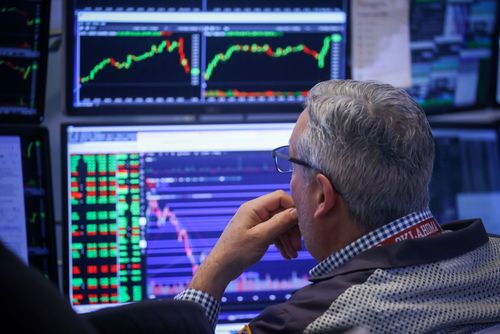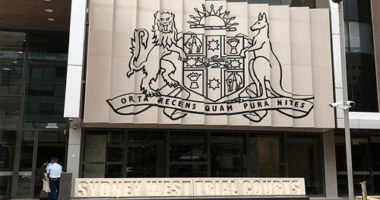Share this @internewscast.com
The US stock market experienced a downturn overnight, largely impacted by a decline in shares of Nvidia and other prominent stocks associated with the artificial intelligence (AI) boom.

Market observers have cautioned that US stocks might be on the verge of a correction, pointing to the rapid increase in stock prices since April. These soaring valuations, particularly among stocks benefiting from the AI craze, have raised concerns about their sustainability.
Despite the recent dip, Nvidia’s stock has still surged by 39% this year, following a remarkable trend where its value doubled in four out of the last five years.
Attention on Wall Street is now focused on Nvidia’s upcoming earnings report on Wednesday (Thursday AEST), which will reveal the company’s profits from the summer months.
The impressive rise in AI stocks is driven by expectations of substantial profit growth. Any earnings that fall short of analysts’ forecasts could challenge the assumptions that have propelled the US stock market to new heights.
These lofty expectations are not limited to technology stocks but are particularly pronounced for companies seen as leaders in the AI sector.
Aramark fell 5.2 per cent after the company reported a profit for the latest quarter that fell short of analysts’ expectations.
The company, which offers food and facilities management for schools, national parks and convention centres, also said it expects an underlying measure of profit to grow between 20 per cent and 25 per cent this upcoming year.
While relatively strong, that was less than what analysts had been forecasting.
That helped offset a rise of 3.1 per cent for Alphabet, the parent company of Google, which jumped after Berkshire Hathaway said it built a $US4.34 billion ownership stake.
Berkshire Hathaway, run by famed investor Warren Buffett, is notorious for trying to buy stocks only when they look like good values while avoiding anything that looks too expensive.
Another source of potential disappointment for Wall Street is what the US Federal Reserve does with interest rates.
The expectation had been that the Fed would keep cutting interest rates in hopes of shoring up the slowing job market. Wall Street loves lower rates because they can give a boost to the economy and to prices for investments.
But questions are rising about whether a third cut for the year would come out of the Fed’s next meeting in December, something that traders had earlier seen as very likely.
The downside of lower interest rates is that they can make inflation worse, and inflation has stubbornly remained above the Fed’s 2 per cent target.
Fed officials have also pointed to the US government’s shutdown, which delayed the release of updates on the job market and other signals about the economy.
With less information and less certainty about how things are going, some Fed officials have suggested it may be better to wait in December to get more clarity.
Now that the shutdown is over, the government is preparing to release September’s delayed jobs report on Thursday (Friday AEST). That could create further swings for the market.
Data that’s very strong would likely stay the Fed’s hand on rate cuts, while figures that are very weak would raise worries about the economy.
In 2026, the Fed is likely to cut interest rates only in response to a slowing economy instead of trying to cut ahead of it, according to Barry Bannister, chief equity strategist at Stifel. That’s not as good an environment for stock prices, and Bannister said the “Fed’s ‘free lunch’ is over”.
In the bond market, the yield on the 10-year Treasury edged down to 4.13 per cent from 4.14 per cent late Friday.
In stock markets abroad, indexes fell modestly across much of Europe and Asia.
Tokyo’s Nikkei 225 slipped 0.1 per cent after the government reported that the Japanese economy contracted at a 1.8 per cent annual pace in the July-September quarter.
South Korea’s Kospi was an outlier and jumped 1.9 per cent as tech-related stocks there did well.













